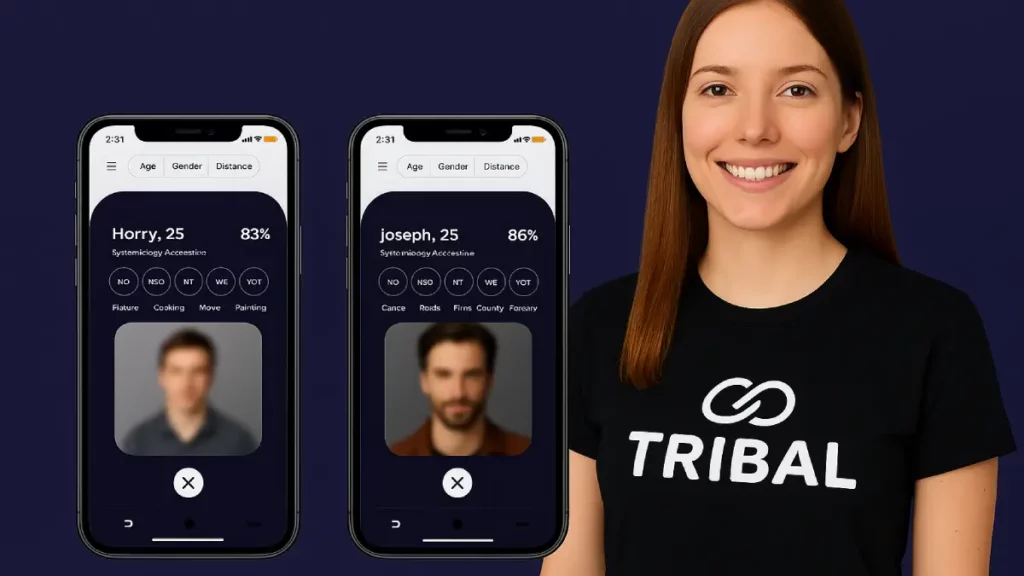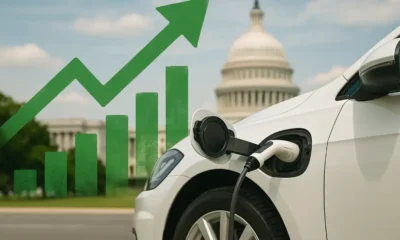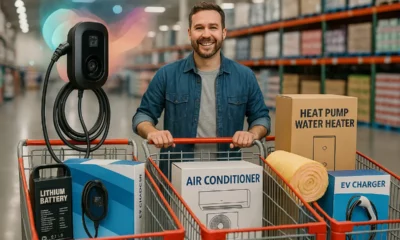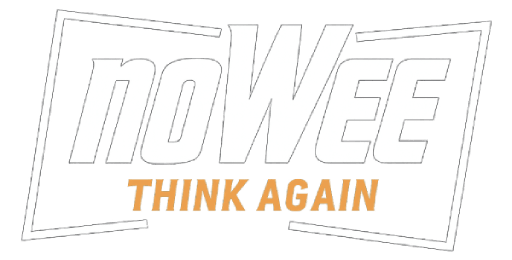Diminished Value Claim: Your Complete Guide to Recovering Lost Vehicle Value
Estimated reading time: 9 minutes
Key Takeaways
- Understand Diminished Value Even after perfect repairs, a car accident can significantly reduce your vehicle’s market value due to its accident history.
- [State] Specifics: Familiarize yourself with [state]’s regulations regarding diminished value claims to ensure you meet the eligibility criteria and maximize your potential compensation.
- Documentation is Key: Gather all necessary documents, including police reports, repair invoices, and a professional appraisal, to build a strong case for your diminished value claim.
Navigate to What Matters
![diminished value claim [state]](https://nowee.org/wp-content/uploads/2025/09/image_0-1-1.webp)
Introduction to Diminished Value Claims in [State]
A diminished value claim [state] is a legal request for compensation that addresses the reduction in your vehicle’s market value after an accident, even when repairs have been completed perfectly.
This value reduction happens because accident history appears on vehicle reports like Carfax, making potential buyers hesitant or unwilling to pay full market price.
In [state], specific regulations govern how these claims work, who qualifies, and how much compensation you might receive. Understanding these rules is crucial for successfully recovering your vehicle’s lost value.
Unlike some states with restrictive policies, [state] allows vehicle owners to pursue diminished value when another driver was at fault, giving you a pathway to financial recovery.
“A diminished value claim bridges the gap between repair costs and the actual financial loss incurred due to a vehicle’s accident history.”
Who Qualifies for a Diminished Value Claim in [State]?
Not everyone can file a diminished value claim [state]. Here’s a quick checklist to determine if you qualify:
- Not at fault: You must not be responsible for causing the accident
- Recent model vehicle: Newer cars typically qualify more easily than older ones
- Good condition: Your car should have been well-maintained before the accident
- Documented accident: You need a police report or insurance claim documentation
- Within time limits: [State] allows claims within [X] years of the accident
Your claim strength also depends on your vehicle’s characteristics. High-value, newer vehicles with low mileage typically receive higher diminished value assessments.
[State] requires specific documentation to support your claim, including proof the other driver was at fault and evidence of your vehicle’s pre-accident condition and value.
Pre-qualification self-assessment:
- Was another driver clearly at fault?
- Is your vehicle relatively new (less than 5-7 years old)?
- Do you have complete accident documentation?
- Are you within [state]’s statute of limitations?
If you answered “yes” to these questions, you likely have a valid diminished value claim [state].
Filing Process: Step-by-Step Guide
Filing a diminished value claim [state] requires careful preparation and documentation. Follow these steps for the best results:
- Gather documentation: Collect the police report, repair invoices, pre-accident maintenance records, and photographs of damage.
- Obtain a professional appraisal: Hire a certified appraiser familiar with [state] regulations to assess your vehicle’s diminished value.
- Prepare your claim letter: Use a diminished value sample letter template to formally request compensation from the at-fault driver’s insurance company.
- Submit your claim package: Send your letter, appraisal, and all supporting documentation to the appropriate insurance company.
- Follow up consistently: Contact the insurance adjuster every 1-2 weeks to check your claim status.
Your diminished value sample letter should include:
- Your contact information
- Vehicle details (make, model, year, VIN)
- Accident information and claim number
- Clear statement of diminished value amount
- Supporting documentation list
- Request for prompt response
Most insurance companies will initially resist or undervalue your claim. Stay persistent and rely on your professional appraisal to justify your request.
Timeline: How Long Do Diminished Value Claims Take?
Understanding how long diminished value claims take helps set realistic expectations. In [state], the typical timeline looks like this:
- Initial claim submission: 1-2 days
- Insurance acknowledgment: 1-2 weeks
- Claim investigation: 2-4 weeks
- Negotiation phase: 2-6 weeks
- Settlement and payment: 1-3 weeks
The total process usually takes between 6-12 weeks, though complex cases may extend longer.
Several factors can affect your timeline:
- Insurance company’s willingness to cooperate
- Quality and completeness of your documentation
- Whether you have professional representation
- Claim backlog at the insurance company
To speed up your claim:
- Submit complete documentation initially
- Use certified mail with return receipt
- Respond immediately to any requests for information
- Consider hiring an attorney for high-value claims or if facing significant delays
Having realistic expectations about how long diminished value claims take can reduce frustration during the process.
Calculating Your Vehicle’s Diminished Value
Accurately calculating your vehicle’s diminished value is crucial for fair compensation. You have several options:
- Online diminished value calculator: Many websites offer calculators that estimate diminished value based on your vehicle details, but results vary in accuracy.
- Professional appraisal: The most reliable method involves hiring a certified appraiser familiar with [state] claims.
- 17c Formula method: Some insurers use this calculation:
- Calculate 10% of your vehicle’s pre-accident value
- Apply damage multipliers (minor: 0.25, moderate: 0.50, severe: 0.75)
- Apply mileage multipliers (reducing value for higher mileage)
For example, a $30,000 vehicle with moderate damage might have a diminished value of $1,500 ($30,000 × 10% × 0.50).
Professional appraisals typically yield higher, more defensible values than calculator tools or insurer formulas. For vehicles worth over $20,000, the professional appraisal cost is usually worth the investment.
Remember, insurers often apply the 17c formula, which typically undervalues your loss. A professional appraisal provides stronger evidence for negotiation.
When to Consider Vehicle Replacement
Sometimes, filing a diminished value claim [state] might not be your best option. Consider these scenarios:
- Your calculated diminished value exceeds 40% of the repaired vehicle’s worth
- Repairs were extensive, affecting multiple major components
- Your vehicle’s make and model is particularly sensitive to accident history
- You were planning to sell your vehicle within the next 1-2 years
In these cases, you might benefit from a different approach:
- Review your total financial position, including:
- Repair costs already covered
- Potential diminished value recovery
- Current market value of your repaired vehicle
- Replacement costs for a similar vehicle
- Evaluate whether trading in or selling privately makes more sense financially.
- Consider whether keeping the vehicle long-term might offset the immediate value loss.
For [state] residents, some vehicle types retain value better after accidents. Research your specific make and model’s post-accident value retention before deciding.
[State] Success Story: Real Claim Example
A [state] resident recently succeeded with their diminished value claim after a significant accident. Here’s what happened:
John owned a 3-year-old luxury sedan valued at $45,000 before being rear-ended at a stoplight. After $12,000 in repairs, the vehicle looked perfect, but a professional appraisal determined it had lost $7,500 in market value.
The insurance company initially offered only $1,200 based on their internal formula. John submitted a formal diminished value claim [state] with:
- Professional appraisal documentation
- Comparable vehicle listings showing price differences
- A strongly-worded diminished value sample letter
- Evidence of [state]’s legal precedents for similar claims
After six weeks of negotiation, John received a $6,200 settlement – over 5 times the initial offer.
The key factors in his success were:
- Thorough documentation
- Professional appraisal from a certified expert
- Understanding of [state] regulations
- Persistence through multiple counteroffers
This case demonstrates how [state] residents can successfully navigate the diminished value claim process with the right approach.
Resources & Next Steps
Ready to pursue your diminished value claim [state]? Here are the resources you need:
- Download our free diminished value sample letter template customized for [state] regulations
- Access recommended diminished value calculator tools to estimate your potential recovery
- Find certified appraisers in [state] who specialize in diminished value claims
- Review [state] statute of limitations to ensure you file within the legal timeframe
Remember these important next steps:
- Document everything related to your accident and repairs
- Obtain a professional appraisal if your vehicle is valuable
- Submit your claim promptly to the at-fault driver’s insurance
- Follow up consistently until resolution
Don’t forget: [state] has a [X]-year deadline for filing diminished value claims. Acting quickly improves your chances of successful recovery. The diminished value claim [state] process can be challenging, but with proper documentation (DIY Home Energy Audit guide) [https://nowee.org/diy-home-energy-audit-guide] and persistence, you can recover the true financial impact of your accident.
Related reading:
- Learn how government policies impact electric vehicle adoption.
- Find the best time to sell your vehicle and maximize your profits.
- If you are looking to switch to EVs, demystify the charging process.
FAQ
Below are quick answers to common questions about this one-minute credit card guide.
What to Do If Your Car is Totaled [State]: A 48-Hour Checklist
What to Do If Your Car is Totaled: A 48-Hour Checklist
Estimated reading time: 8 minutes
Key Takeaways
- Immediate action is crucial: Document everything, contact your insurance company, and understand your coverage.
- ACV negotiation is key: Research comparable vehicles and challenge low settlement offers with solid evidence.
- Gap insurance can be a lifesaver: Understand your policy and prepare necessary documents to expedite claims.
![what to do if car is totaled [state]](https://nowee.org/wp-content/uploads/2025/09/image_0.webp)
Table of contents
- What to Do If Your Car is Totaled: A 48-Hour Checklist
- Key Takeaways
- Introduction
- Understanding Total Loss: The First 24 Hours
- Dealing with Insurance: The ACV Calculation
- Securing Transportation: Your Rental Car Options
- Financial Protection: Understanding Gap Insurance
- 7-Day Replacement Planner
- State-Specific Considerations
- Conclusion
- FAQ
Introduction
Having your car declared totaled after an accident can be overwhelming. The shock, combined with insurance terminology and financial concerns, leaves many wondering what to do if car is totaled in their state. This guide provides a comprehensive 48-hour action plan to protect your finances and get you back on the road quickly.
Whether you’re dealing with insurance adjusters, searching for a replacement vehicle, or trying to understand your state’s specific rules, this checklist will guide you through each critical step.
Understanding Total Loss: The First 24 Hours
When an insurance company declares your vehicle “totaled,” it means the cost to repair your car exceeds a certain percentage of its value. This percentage varies based on your state’s total loss threshold.
State Total Loss Threshold Variations
States typically use one of two methods to determine if a vehicle is totaled:
- Percentage threshold states – Set a specific percentage (ranging from 60% to 100%) of the vehicle’s Actual Cash Value (ACV)
- Total loss formula states – Compare the cost of repairs plus the salvage value to the pre-accident value
For example, Florida’s threshold is 80% of ACV, while Texas uses 100%. States like California and Georgia use the total loss formula instead of a fixed percentage.
Immediate Actions After Your Accident
- Document everything at the scene (photos, police report, witness information)
- Contact your insurance company immediately to report the accident
- Ask about rental car coverage and how long it lasts
- Request a copy of your policy to review coverage details
- Keep all receipts for towing, storage, and other related expenses
See this chart.
Dealing with Insurance: The ACV Calculation
Insurance companies determine if your car is totaled by comparing the Actual Cash Value (ACV) versus repair cost. Understanding this calculation helps you ensure a fair settlement.
What Affects Your Vehicle’s ACV
Your car’s ACV is influenced by:
- Age and mileage
- Pre-accident condition
- Market value of comparable vehicles in your area
- Options and features
- Recent improvements or repairs
Insurance adjusters often use industry databases to determine your car’s value, but these valuations may not capture your vehicle’s true worth.
Tips for Challenging a Low ACV Offer
If you believe the offered settlement is too low:
- Research comparable vehicles for sale in your area
- Provide documentation of recent improvements or maintenance
- Consider hiring an independent appraiser (cost: $200-$500)
- Request the complete valuation report from your insurer
- Document unique features or low mileage that increase value
Remember to negotiate firmly but professionally, focusing on specific value factors rather than emotional attachment.
See this guide.
Securing Transportation: Your Rental Car Options
After your car is totaled, transportation becomes an immediate concern. Most insurance policies provide rental car after total loss coverage, but understanding the limitations is crucial.
Standard Rental Coverage Periods
Typical insurance policies offer:
- 3-7 days of rental coverage after a total loss determination
- Daily rate limits (often $30-$50 per day)
- Maximum total coverage amounts ($900-$1,500)
Your coverage ends when the insurance company makes a settlement offer, not when you receive the payment or purchase a new vehicle.
Extending Your Rental Coverage
Try these strategies to maximize your rental period:
- Request an extension due to reasonable delays in the settlement process
- Ask if your policy has any rental extensions for total loss situations
- Consider negotiating the extension as part of your settlement
- Look into discounted long-term rates directly with rental companies
If rental coverage is insufficient, explore rideshare services, public transportation, or borrowing a vehicle from friends or family while finalizing your settlement.
Read about total loss threshold by state.
Financial Protection: Understanding Gap Insurance
If you financed or leased your totaled vehicle, gap insurance can be a financial lifesaver. This coverage pays the difference between what you owe on your loan and the car’s ACV.
Gap Insurance Refund Timeline and Process
After a total loss, you may be entitled to a refund for the unused portion of your gap insurance. Here’s what to expect:
- Most gap insurance refunds process within 15-30 days after claim approval
- You’ll need to cancel the policy after the claim is settled
- Refunds are typically prorated based on the unused term
Required Documents for Gap Claims
Prepare these documents to expedite your gap claim:
- Original purchase agreement
- Gap insurance policy documents
- Payoff statement from your lender
- Insurance settlement documentation
- Proof of payment for the gap policy
- Total loss valuation from your insurer
Preventing Gap Claim Delays
Common reasons for delayed gap claims include:
- Missing or incomplete documentation
- Disputes over the vehicle’s value
- Communication delays between the insurer and lender
- Incorrect payoff information
Stay proactive by following up regularly with both your gap provider and auto insurer.
Learn about total loss threshold by state.
7-Day Replacement Planner
With your settlement amount determined, it’s time to find a replacement vehicle. This 7-day planner helps you make informed decisions without rushing.
Day 1-2: Research Vehicles Within ACV Budget
- Determine your budget (settlement amount plus any additional funds)
- Research reliable models within your price range
- Check safety ratings and reliability scores
- Consider fuel efficiency and maintenance costs
- Create a shortlist of 3-5 potential vehicles
Day 3-4: Secure Financing Options
- Contact your bank or credit union for pre-approval
- Compare interest rates from multiple lenders
- Calculate monthly payments based on different loan terms
- Consider how down payment size affects your loan
- Check your credit report for any errors that could affect rates
Day 5-7: Test Drive and Finalize Purchase
- Schedule test drives for your top choices
- Bring a checklist of features important to you
- Request vehicle history reports for used cars
- Use your insurance settlement as leverage in negotiations
- Consider certified pre-owned options for extended warranty coverage
Remember that dealers are often more willing to negotiate when they know you have cash from an insurance settlement.
State-Specific Considerations
Your state’s total loss threshold significantly impacts how quickly your vehicle may be declared totaled and what happens afterward.
State-Specific Threshold Variations
Some notable state variations include:
- Colorado: 100% threshold (most conservative)
- Oklahoma: 60% threshold (most liberal)
- Texas: 100% threshold
- Florida: 80% threshold
- Pennsylvania, California, and others: Total loss formula
State Laws Affecting Settlements
Beyond thresholds, states differ in:
- How quickly insurers must inspect damaged vehicles
- Mandatory timeframes for settlement offers
- Whether you can keep your totaled vehicle (salvage retention)
- Depreciation calculations allowed by insurers
Salvage Title Requirements
If you decide to keep your totaled vehicle:
- Most states require a salvage title for totaled vehicles
- Rebuilding requires inspection and certification
- Insurance may be more difficult or expensive to obtain
- Resale value will be significantly lower
Check with your state’s DMV for specific salvage title regulations and requirements.
See this guide.
Conclusion
When dealing with what to do if car is totaled, following this 48-hour checklist can significantly reduce stress and financial impact. From understanding your state’s total loss threshold to securing proper transportation and navigating the insurance claim process, each step is critical.
Remember that being proactive and informed throughout the process gives you the best chance at a fair settlement and smooth transition to your replacement vehicle. Keep this guide bookmarked for reference and share it with friends or family members who find themselves facing a total loss situation.
If you’re looking for inspiration, this article offers advice (see A Practical Guide to Building an Efficient, Secure, and AI-Powered Home).
Consider these points when securing financing options (see Lease Buyout Calculator: Decide if Buying, Selling, or Returning is Your Best Option).
Want to know what to do with Salvage Title Requirements (Salvage Title Requirements).
A step-by-step process on how to sell a car with a lien (see How to Sell a Car with a Loan: A Step-by-Step Guide to Lien Payoff & Title Transfer).
Explore sustainable tech innovations for a greener future (see Sustainable Tech: Innovations Shaping a Greener Future).
FAQ
Q: What is Actual Cash Value (ACV)?
A: The ACV is the fair market value of your vehicle immediately before the accident, taking into account depreciation, mileage, and condition.
Q: What if I still owe more than the car is worth?
A: This is where gap insurance becomes important. Gap insurance covers the difference between your loan balance and the ACV, preventing you from owing money on a car you no longer have.
Prepare for Amazement: The World of De extinct Animals is Here!
Journey to the Past: Get Ready for De extinct Animals!
Estimated reading time: 6 minutes
Key Takeaways
- De-extinction science aims to bring back extinct species using advanced genetic techniques.
- Methods include DNA extraction from ancient remains, genome sequencing, cloning, genome editing (like CRISPR), and back-breeding.
- Potential benefits involve restoring ecosystems, possibly helping fight climate change, and advancing conservation tools for currently endangered species.
- Key species being considered include the Woolly Mammoth, Passenger Pigeon, and Aurochs.

Table of contents
Prepare for Amazement: The World of De extinct Animals is Here!
Have you ever wished you could see a real woolly mammoth? Or watch flocks of passenger pigeons fill the sky again? It sounds like something out of a science fiction movie, but guess what? Scientists are actually working on making this happen! Welcome to the incredible world of de extinct animals, a field buzzing with excitement and discovery. This week, the hottest news is all about bringing animals back from the past, and we’re here to give you the inside scoop.
Imagine walking through a park and seeing creatures that haven’t walked the Earth in hundreds, or even thousands, of years!
That’s the dream driving de extinct animals research. It’s a super exciting area of science, also called resurrection biology, where brilliant minds are using amazing tools to try and bring extinct species back to life, or at least create animals that look and act very much like them. It’s like real-life time travel, but with science!
So, how exactly do scientists plan to achieve this amazing feat? And which incredible creatures might we see again? Grab your explorer hat, because we’re diving deep into the science, the animals, and the potential future shaped by de-extinction!
What’s the Secret Sauce? How De-Extinction Works
Bringing back extinct animals isn’t as simple as waving a magic wand. It involves some seriously cool science, like solving a giant puzzle using clues left behind by animals from long ago. De-extinction relies on big steps forward in understanding DNA (the instruction manual for life), cloning (making copies), editing those instructions, and careful breeding. Here’s a step-by-step look at how scientists are tackling this mind-blowing challenge:
Finding the Ancient Clues (DNA Extraction)
First, scientists need the instruction manual – the DNA – of the extinct animal. They carefully search for this precious material in old remains, like bones dug up from the ground, feathers preserved in museums, or even entire animals frozen in ice for thousands of years (like mammoths!). The challenge is that DNA gets old and crumbly over time, like an ancient treasure map. The older the sample, the more broken the DNA might be, making it harder to read.
Putting the Puzzle Together (Genome Sequencing and Editing)
Once scientists have some DNA, they use special machines to read its code, called sequencing. This gives them the animal’s genome – its complete set of instructions. But often, parts of the map are missing or torn. So, scientists cleverly use the genome maps of the extinct animal’s closest living relatives (like using an elephant’s map to help fix a mammoth’s map) to figure out the missing pieces and stitch the instructions back together.
- Making the Animal Magic Happen (Cloning or Genome Editing)
Okay, now scientists have the instruction manual. How do they make the animal? There are a couple of super-smart ways:- Cloning: Think of it like making a copy. Scientists take the complete DNA instruction manual from the extinct animal and carefully place it inside an egg cell from a closely related living animal. They first remove the original instructions from the egg cell so it only has the extinct animal’s DNA. If all goes well, this egg can grow into a baby animal!
- Genome Editing: This is like being a super-precise editor for the book of life. Scientists use tools like CRISPR (it works like tiny scissors and glue for DNA!) to change the DNA instructions of a living relative. They ‘edit’ the relative’s DNA to include important bits of the extinct animal’s instructions – like adding the instructions for woolly fur and thick fat to an elephant’s DNA to make it more mammoth-like. This creates a hybrid – an animal that’s a mix, but looks and maybe acts like the extinct one.
Breeding Backwards (Back-Breeding)
Sometimes, the special features of an extinct animal still exist, scattered among its living relatives. Take the Aurochs, the giant wild cattle that lived long ago. Some modern cows still have bits of Aurochs DNA and features. Scientists can carefully choose cows that look most like Aurochs and breed them together over many generations. The goal is to gather all those ancient features back into one animal, creating a modern creature that looks and lives very much like the extinct Aurochs.
Welcome to the World! (Rearing and Reintroduction)
Making the baby animal is just the start! Once a mammoth-like calf or a dodo chick is born, it needs to be raised carefully. The ultimate dream is to have enough of these animals to release them back into the wild, into places where they used to live or similar areas where they can thrive and help the environment.
Why Bring Back De extinct Animals? The Exciting Possibilities!
Okay, bringing back lost animals is super cool, but are there other reasons scientists are working so hard on this? You bet! De-extinction isn’t just about seeing amazing creatures again; it could have some massive positive impacts:
Healing Nature (Restoring Ecosystems): Every animal has a job in its environment. When a species disappears, its habitat can suffer. Bringing back key animals, called “keystone species,” could help fix broken ecosystems. For example, mammoth-like animals could turn tundra back into grassland, and Passenger Pigeons could help forests grow by spreading seeds. It’s about making nature healthier and stronger.
Fighting Climate Change: Believe it or not, some de-extinct animals might help us fight climate change! The Woolly Mammoth is the star example here. By trampling snow and encouraging grasslands, they could help keep the Arctic ground (permafrost) frozen, preventing the release of greenhouse gases trapped inside.
Could ancient giants help solve modern problems? The potential connection between mammoths and climate change mitigation is a fascinating area of research!
Supercharging Science (Advancing Conservation): The amazing science being developed for de-extinction – like advanced genetic engineering and cloning – isn’t just for bringing back the past. These tools can also be used to help animals that are endangered *right now*. Scientists could use these techniques to boost the health and numbers of struggling species by increasing their genetic diversity (the variety in their instruction manuals), making them stronger against diseases and changes in their environment.
The journey to bring back de extinct animals is one of the most exciting scientific adventures happening today. It blends incredible technology with a deep love for the natural world. Could we one day live in a world where the calls of Passenger Pigeons echo again, or where herds of mammoth-like creatures roam the Arctic? It’s a future that sparks the imagination!
Keep watching this space – the story of de-extinction is just beginning!
FAQ
Q: Will we see dinosaurs like in Jurassic Park?
A: Probably not. Dinosaur DNA is extremely old (tens of millions of years!) and likely too degraded to recover usable sequences, unlike the more ‘recent’ DNA from mammoths or passenger pigeons (thousands or hundreds of years old).
Q: Is a ‘de-extinct’ animal exactly the same as the original?
A: It depends on the method. Cloning could produce a very close genetic match if a complete, intact genome is available. Genome editing creates a hybrid – a modern animal edited to have key traits of the extinct one (like an elephant modified to be mammoth-like). Back-breeding aims to concentrate ancestral traits but results in a modern animal resembling the extinct one, not a perfect replica.
Q: Are there ethical concerns about de-extinction?
A: Yes, there are many discussions. Concerns include animal welfare (how will these animals adapt?), potential impacts on existing ecosystems if reintroduced, the high cost (could resources be better used for current conservation?), and the fundamental question of whether humans should ‘play God’ in this way.
Get Ready! The Future of Esports Tournaments & New Games Are Here!
The Future of Esports – Biggest Tournaments & New Games
Estimated reading time: 7 minutes
Key Takeaways
- 2025 marks a significant growth year for esports, featuring larger tournaments and emerging games alongside established titles.
- The Esports World Cup 2025 in Riyadh is set to be a landmark event with competitions across 25+ games and a historically large prize pool.
- Core esports games like League of Legends, Dota 2, and Counter-Strike 2 continue to dominate participation and viewership numbers.
- Valorant demonstrates rapid growth, supported by expanding franchised leagues, positioning it as a future top-tier esport.
- Mobile esports, exemplified by the PUBG Mobile World Cup, are becoming increasingly significant in the global competitive gaming landscape.

Table of contents
Introduction: Welcome to the Future!
Wow! Get ready for some super exciting news from the world of video games! Have you ever watched people play games online and compete against each other?
That’s called esports, and it’s getting bigger and bigger every single day! This year, 2025, is going to be HUGE for esports.
We’re talking about amazing new games, giant competitions with awesome prizes, and cool new ways to play and watch. Let’s dive into the future of esports – biggest tournaments & new games and see what amazing things are happening. Imagine giant stadiums filled with fans cheering for their favourite players, just like in football or basketball, but for video games!
We’ll explore the absolutely massive tournaments coming up, check out the games everyone is playing (and the new ones getting popular!), and peek into the super cool future trends that will change how we see gaming forever. Get strapped in, because the world of competitive gaming is rocketing forward!
Biggest Esports Tournaments in 2025
Okay, let’s talk about the biggest parties in esports – the tournaments! These are where the best players from all over the world come to show off their skills and win incredible prizes. And guess what? 2025 has some of the most gigantic tournaments we’ve ever seen!
First up, hold onto your controllers for the Esports World Cup 2025! This mega-event is happening in a place called Riyadh, in Saudi Arabia. It’s not just for one game; it’s like the Olympics of esports! They are planning to have competitions for 25 different games.
We’re talking about super popular games like League of Legends, Dota 2, Valorant, and even the mobile game sensation PUBG Mobile. What’s even crazier? They will even have Chess! And the prizes? Get this: they say it will have the biggest prize money ever given out in esports history! How cool is that?
“An esports Olympics with potentially the largest prize pool ever? 2025 is starting with a bang!”
Then there’s the legendary League of Legends World Championship. If you know esports, you know this one! It’s always one of the most watched events on the planet, with millions tuning in.
The company that makes League of Legends, Riot Games, is even changing things up in 2025, making the leagues different and adding new international tournaments to make it even more exciting. Imagine teams battling it out on huge stages with flashing lights and roaring crowds!
Fans of shooting games, listen up! Counter-Strike 2 is going to have a massive year. Big events like IEM Cologne, the ESL Pro League, and all the exciting BLAST competitions will be major highlights in 2025. The company behind the game, Valve, has made some changes to help these tournaments grow even bigger. Expect some super intense matches!
And we can’t forget about Dota 2! This game also has a huge following. Look out for awesome tournaments like DreamLeague Season 26 and the Dota 2 Masters Riyadh. Lots of people watch these, and tons of players try to compete.
But wait, there’s more! The Valorant Champions Tour (VCT), another game from Riot Games, keeps getting bigger and better, with more money being put into it and cool tournaments happening worldwide, showing continued growth.
Mobile gaming fans, the PUBG Mobile World Cup is a must-watch, showing just how popular gaming on phones has become. And of course, games like Call of Duty and Overwatch still have their huge finals – the Call of Duty League and Overwatch League Finals – which are always packed with action. Phew! So many amazing competitions to watch!
Popular and Emerging Esports Games
Okay, we know about the giant tournaments, but what about the games themselves? What are people playing and watching the most in 2025?
Is the New Tribal Dating App the Answer to Finding Deeper Connections Without Seeing Faces?
Is the New Tribal Dating App the Answer to Finding Deeper Connections Without Seeing Faces?
Estimated reading time: 6 minutes
Key Takeaways
- Tribal Dating app is a new idea to prioritizing personality and interests over initial physical appearance.
- The concept aims to foster deeper connections by delaying the visual reveal, focusing on emotional intimacy first.
- Potential benefits include reduced superficiality and bias, while drawbacks could involve catfishing or disappointment upon reveal.
- Features like voice prompts and timed chats facilitate non-visual interaction.
- The app may appeal most to users tired of photo-centric dating and seeking genuine connection beyond looks.
- Also, you should read “Smart Home Security Systems: The Complete Guide to Protecting Your Connected Home“

Table of contents
Beyond the Swipe: What is Tribal Dating?
Get ready, world of online dating, because there’s a thrilling new player in town! Have you ever felt tired of swiping endlessly through photos? Do you wish you could connect with someone based on who they *really* are, beyond just a curated profile picture? If so, you’re not alone.
Enter Tribal Dating, a new app shaking things up by putting personality front and center. The core idea? To help users forge connections based on **personality, values, and interests** *before* revealing physical appearance. It challenges the status quo of visually driven dating platforms and asks a compelling question: can delaying the visual aspect lead to deeper, more meaningful relationships?
“Imagine connecting with someone purely based on their voice, their humor, their way of thinking… before you even know what they look like. Intriguing, right?”
While Tribal Dating feels fresh, the concept isn’t entirely new. It echoes earlier dating experiments like voice-based apps such as Blindlee or even the anonymity of early internet chat rooms, where connections sparked through text and shared interests long before photos were exchanged.
The Potential and Pitfalls: Pros and Cons
Tribal Dating’s “personality-first” approach holds significant promise. The most obvious potential benefit is fostering **more genuine connections**. By removing the immediate focus on looks, users might:
- Reduce **superficiality and appearance-based bias** that often dominate initial interactions on other apps.
- Take more time to understand someone’s character, values, and communication style.
- Build **emotional intimacy** and rapport before physical attraction comes into play.
“Could focusing on ‘who’ before ‘what’ be the key to unlocking deeper compatibility?”
However, this model isn’t without potential downsides. The anonymity factor, while intended to promote depth, also opens the door to issues like:
- Catfishing: Misrepresenting oneself is easier when visuals are delayed.
- Disappointment upon reveal: Building a strong emotional connection doesn’t guarantee physical attraction, which remains important for many. The eventual reveal could lead to letdown if expectations don’t align with reality.
- Managing the transition: Deciding *when* and *how* to reveal appearances requires **honesty and managing expectations** from both parties.
How Does It Work? Features and Process
While specific details might evolve, Tribal Dating likely incorporates features designed to facilitate non-visual connection. These could include:
- Detailed Profiles (text-based): Focusing on prompts about values, hobbies, life goals, and personality traits.
- Voice Prompts & Audio Messages: Allowing users to hear each other’s tone and personality.
- Interest Matching Algorithms: Connecting users based on shared passions and compatibility scores derived from profile information.
- Timed Chat Features: Encouraging conversation flow before potentially moving towards a visual reveal.
- Controlled Reveal: The mechanism for sharing photos is likely based on **timing and mutual consent**, perhaps after a certain amount of interaction or when both users agree.
“The process itself encourages a different kind of engagement – one based on listening, understanding, and patience.”
Who is Tribal Dating For?
Is Tribal Dating the right fit for everyone navigating the complex world of modern romance? Probably not. It’s likely to resonate most strongly with individuals who:
- Are experiencing “swipe fatigue” and desire interactions with more substance.
- Genuinely prioritize **personality over initial physical attraction**.
- Value deep conversation and emotional connection early on.
- Are perhaps less conventionally “photogenic” or feel their personality shines brighter than their pictures.
Conversely, it might be less ideal for those where immediate **physical chemistry** is a paramount screening factor or who prefer the efficiency of quickly assessing visual compatibility.
A Niche Trend or the Future of Dating?
Only time will tell whether Tribal Dating and similar concepts will revolutionize the online dating landscape or remain a **niche trend** catering to a specific subset of daters. Its success hinges on its ability to cultivate a community that values its core principles and effectively manage the challenges of delayed visual reveals.
“Regardless of its market share, Tribal Dating represents a fascinating counterpoint to the visual saturation of mainstream dating apps, prompting us all to reflect on what truly matters when seeking connection.”
FAQ
Q: What is the main difference between Tribal Dating and other apps?
A: The primary difference is the intentional delay in revealing profile pictures. Tribal Dating emphasizes connecting through personality, interests, and conversation *before* focusing on physical appearance.
Q: How is catfishing prevented if there are no initial photos?
A: While no system is foolproof, features like voice interaction, detailed text profiles, and potentially video calls before meeting (after the initial chat phase) can help verify identity and personality consistency. However, user vigilance remains important.
Q: When do users get to see photos of each other?
A: The exact timing likely depends on the app’s specific rules, but it generally happens after a period of interaction and requires mutual consent from both users involved in the chat.
Q: Is physical attraction still considered important on Tribal Dating?
A: The app doesn’t negate the importance of physical attraction; it simply changes the *timing* of when it’s introduced. The hope is that by building an emotional foundation first, the eventual physical aspect can be considered within a broader context of compatibility.
-



 Mobility8 months ago
Mobility8 months agoHow Government Policies Impact Electric Vehicle Adoption: A Comprehensive Analysis
-



 Sustainability5 months ago
Sustainability5 months agoBallerina Farm Protein Powder: The Ultimate Farm-to-Shake Solution
-



 Sustainability8 months ago
Sustainability8 months agoHome Wind Energy: The Complete Guide to Powering Your Green Home with Wind Turbines
-



 Sustainability8 months ago
Sustainability8 months agoHarnessing Renewable Energy for a Sustainable Future: Powering Tomorrow’s World Today
-



 Technology8 months ago
Technology8 months agoGet Ready! The Future of Esports Tournaments & New Games Are Here!
-



 Mobility8 months ago
Mobility8 months agoEV Charging 101: Costs, Home Stations, and How to Save with Rebates



![what to do if car is totaled [state]](https://nowee.org/wp-content/uploads/2025/09/image_0-80x80.webp)
![diminished value claim [state]](https://nowee.org/wp-content/uploads/2025/09/image_0-1-80x80.webp)



